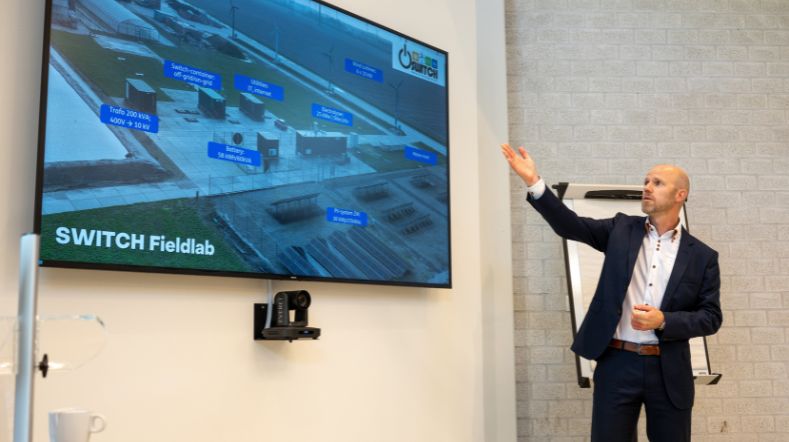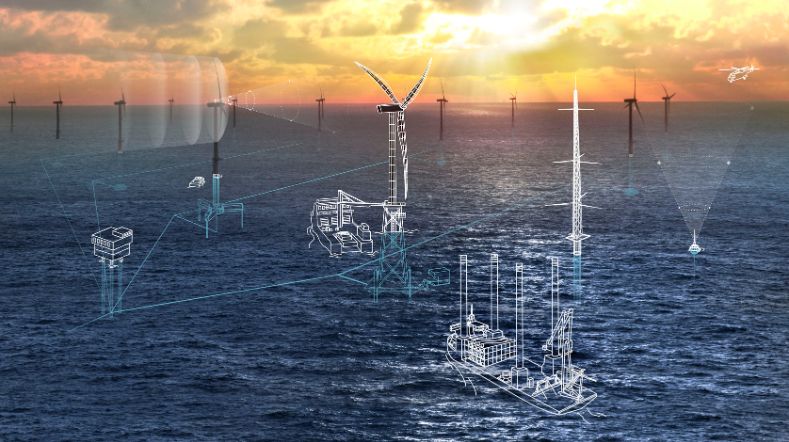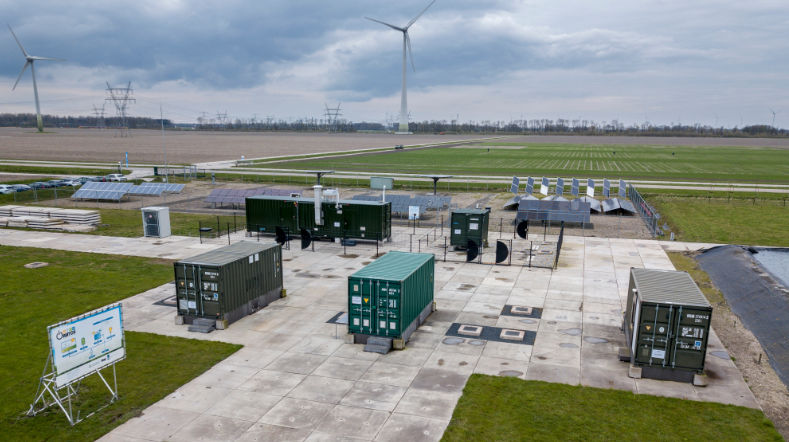
FlexH2: Flexible Offshore Wind Hydrogen Power Plant Module
Status project
2022 – 2026
In cooperation with
10 partners
The Netherlands is committed to significantly increase the renewable electricity production, from mainly wind and solar energy, to 70% of the electricity supply by 2030. In order to keep the electricity grid stable with such volumes, one of the solutions is the integration of hydrogen in the energy system. For instance, by producing hydrogen from offshore wind energy.
From offshore wind to green hydrogen production
The integration of such large amounts of variable, renewable power requires a holistic energy system design and technological innovations to avoid excessive volatility in energy balancing mechanisms.
To accelerate the scale-up of green hydrogen production from offshore wind and its integration in the energy system, 10 leading partners joined forces to develop and demonstrate the necessary technology. The FlexH2 consortium, led by Shell, consists of industrial partners and knowledge institutes, including TNO. They are cooperating closely to conduct joint research.

“Creating viable business models for offshore wind-to-hydrogen leads to a win-win situation for the industrial transformation to a net-zero emission energy system.”
Iratxe Gonzalez Aparicio of TNO about the project: “The FlexH2 project sets the ground for a proof of concept of new integrated wind-to-hydrogen designs, prior to the implementation and upscaling phase. Creating viable business models for offshore wind-to-hydrogen leads to a win-win situation for the industrial transformation to a net-zero emission energy system.”
Reduce costs
The FlexH2 project will develop innovations that could significantly reduce investment costs for the offshore wind transmission infrastructure. Wind-to-hydrogen solutions enable direct sourcing of renewable electricity to green hydrogen production.
It is expected that these solutions are scalable and that they can be operated independently from a local or national power grid, thus reducing the time-to-market significantly by 5 to 10 years. The integration of the various proposed innovations could reduce the costs of hydrogen production by at least 10% and well before 2030. These proposed innovations vary from innovations in the offshore wind turbine to innovations in transport and delivery of the power to an onshore electrolyser.
TNO contributes to the project by delivering the overall conceptual design:
- Design optimisation of an offshore wind hydrogen power plant module
- Operational strategy delivering flexibility in an efficient energy system
- Delivery of the energy management system
Novel production concept
The FlexH2 project will design a novel offshore wind-onshore hydrogen production concept. The project aims to achieve higher efficiency and greater flexibility of the power system.
In addition, improved transformers will be designed for the power conversion between the medium voltage alternating current and the electrolysers. To verify this technology, a loop simulation will be run and a small demonstration unit will be built to test the design.
The partners will then conduct a complete engineering system study, which will include a newly developed system, a grid-forming wind farm and a solid-state transformer. In the last step, a conceptual design of the FlexH2 concept will be designed and developed. Also, the behaviour of the wind turbine will be mocked in a laboratory environment.
This project is supported with a subsidy by the Dutch Ministry of Energy and Climate. (MOOI, ‘Missiegedreven Onderzoek, Ontwikkeling en Innovatie’, grant agreement 52103). The project is part of a joint research programme in offshore wind called GROW.
Get inspired
TNO and Jungle AI collaborate to detect cyberattack on wind turbine and improve detection capabilities


Wind energy webinars

Webinar: System transformation in offshore renewable supply


SWITCH tackles the energy issues of the future


SWITCH field lab of TNO and Wageningen University & Research/ACRRES opened


